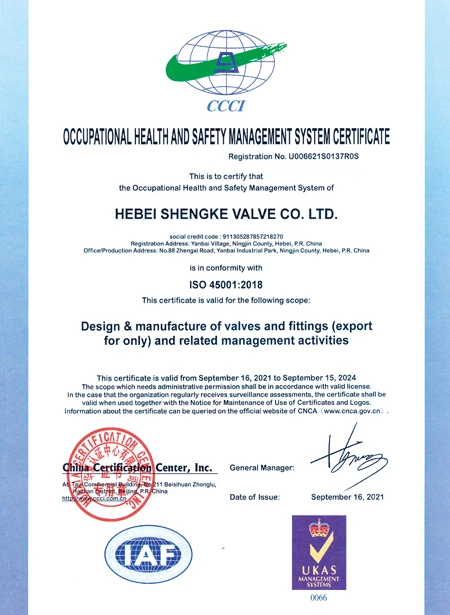Nov . 24, 2024 11:31 Back to list
foot valve for water pump
Understanding Foot Valves for Water Pumps
A foot valve is an essential component in the operation of water pumps, particularly in systems that require the ability to manage water supply efficiently. This device primarily serves as a one-way valve, allowing water to flow into the pump while preventing backflow when the pump is not in operation. Understanding its function, design, and maintenance is crucial for anyone involved with water pumping systems, whether for agricultural irrigation, domestic water supply, or industrial applications.
Function of the Foot Valve
Foot valves are typically installed at the bottom of a suction pipe submerged in the water source. Their primary function is to maintain the prime in the pump. When the pump is turned off, the foot valve closes, preventing the water from draining back into the source. This acts not only to keep the pump filled with water but also avoids the risk of damaging the pump due to excessive air in the system. By ensuring that the pump remains primed, foot valves enable quick starting and improve overall efficiency.
Design Features
A standard foot valve consists of a valve body, a strainer, and a closure mechanism, often a rubber diaphragm or a ball. The strainer is critical as it filters out debris and prevents larger particles from entering the pump, which can lead to clogs or damage. The materials used for foot valves are typically corrosion-resistant, such as PVC, brass, or stainless steel, to withstand various environmental conditions and prevent degradation over time.
foot valve for water pump

Foot valves come in various sizes and configurations to accommodate different pumping systems. It’s essential to select the right size for your specific application, as a valve that is too small may hinder the flow, while one that is too large may not create a proper seal.
Importance of Maintenance
Maintaining a foot valve is vital for ensuring the longevity and efficiency of a water pumping system. Regular checks for debris or blockages in the strainer will help maintain good flow rates. It is advisable to inspect the valve for any signs of wear or damage, particularly in the closure mechanism. If a foot valve becomes faulty, it can lead to issues such as loss of prime, which can lead to pump overheating or even complete pump failure.
Furthermore, periodic cleaning of the strainer is essential, especially in environments where the water source may have high sediment or organic matter content. Depending on usage and the condition of the surrounding environment, these checks should be conducted at least once a year.
Conclusion
In summary, foot valves play a vital role in the effective functioning of water pumps. By ensuring a constant supply of water and preventing backflow, they enhance the reliability and efficiency of pumping systems. Understanding their function, maintaining their condition, and selecting the right type for your application can significantly impact the performance and durability of your water pumping operations. Whether for residential, agricultural, or industrial use, investing time and resources in properly managing foot valves will ultimately lead to smoother operations and reduced maintenance costs.
Share